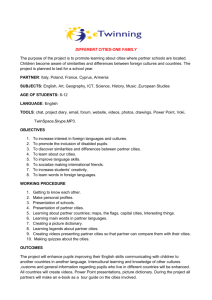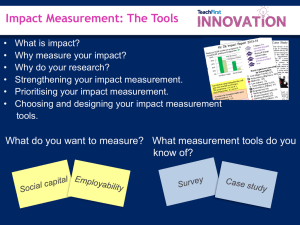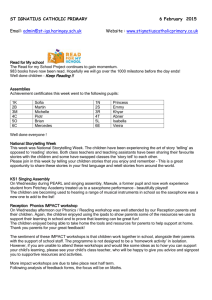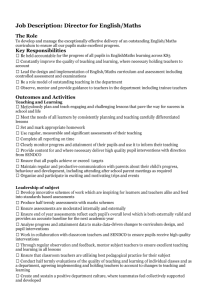Lesson Planning Pack - Problem-Solving: Overview
advertisement
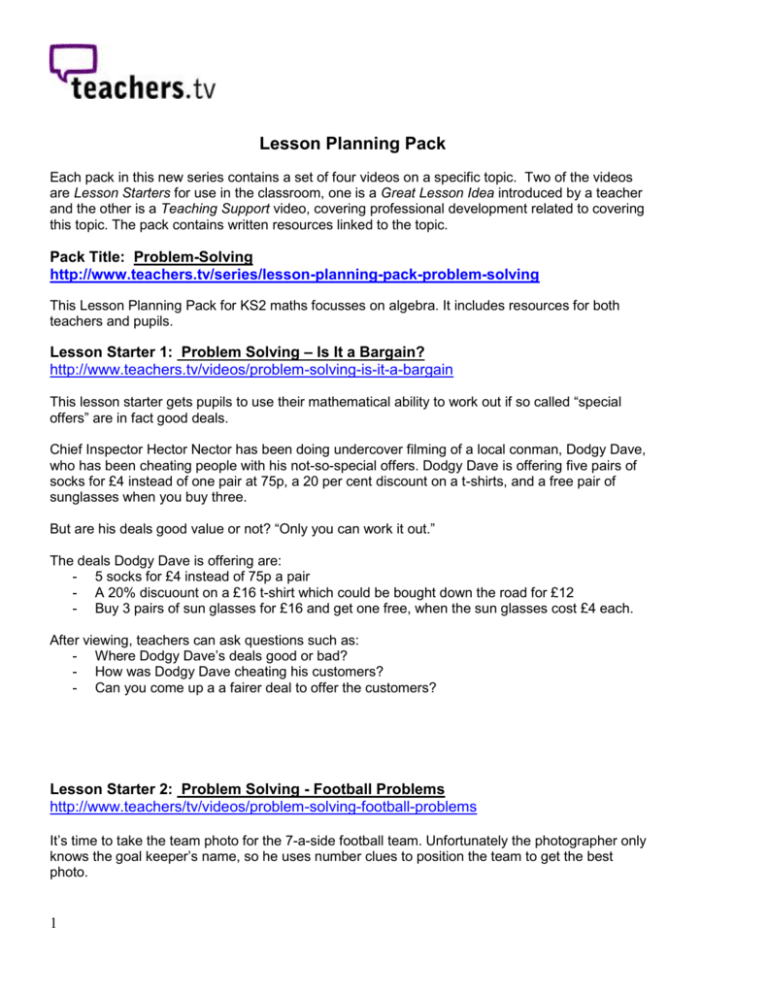
Lesson Planning Pack Each pack in this new series contains a set of four videos on a specific topic. Two of the videos are Lesson Starters for use in the classroom, one is a Great Lesson Idea introduced by a teacher and the other is a Teaching Support video, covering professional development related to covering this topic. The pack contains written resources linked to the topic. Pack Title: Problem-Solving http://www.teachers.tv/series/lesson-planning-pack-problem-solving This Lesson Planning Pack for KS2 maths focusses on algebra. It includes resources for both teachers and pupils. Lesson Starter 1: Problem Solving – Is It a Bargain? http://www.teachers.tv/videos/problem-solving-is-it-a-bargain This lesson starter gets pupils to use their mathematical ability to work out if so called “special offers” are in fact good deals. Chief Inspector Hector Nector has been doing undercover filming of a local conman, Dodgy Dave, who has been cheating people with his not-so-special offers. Dodgy Dave is offering five pairs of socks for £4 instead of one pair at 75p, a 20 per cent discount on a t-shirts, and a free pair of sunglasses when you buy three. But are his deals good value or not? “Only you can work it out.” The deals Dodgy Dave is offering are: - 5 socks for £4 instead of 75p a pair - A 20% discuount on a £16 t-shirt which could be bought down the road for £12 - Buy 3 pairs of sun glasses for £16 and get one free, when the sun glasses cost £4 each. After viewing, teachers can ask questions such as: - Where Dodgy Dave’s deals good or bad? - How was Dodgy Dave cheating his customers? - Can you come up a a fairer deal to offer the customers? Lesson Starter 2: Problem Solving - Football Problems http://www.teachers/tv/videos/problem-solving-football-problems It’s time to take the team photo for the 7-a-side football team. Unfortunately the photographer only knows the goal keeper’s name, so he uses number clues to position the team to get the best photo. 1 Players are numbered 1 through to 7. Can your pupils follow the clues and work out which player stands where for the team photo? It is suggested that you pause the video after each clue to allow your pupils to work out the answers. The clues the photographer gives are as follows: - Can the goalie, number 1, crouch right in the middle at the front (1) - Can the player with the largest prime number on their back crouch next to the goalkeeper. (On the right hand side as we are looking) (7) - I need someone standing in the gap behind them, who’s number is half their sum (1+7 divided by 2 is 3) - Can the smallest even number stand in the back row please (Left hand side of player already standing there) (2) - I want a player to stand at the beginning of the back row whose number will be the sum of the two numbers to next to them (2 + 4 is 6) - The final space in the front row I’d like the player with the number that is the result of dividing the top first number by the top second number (6 / 2 = 3) - The final player to go in the back row should then be the sum of the first and third number in that row divided by the second number in that row (6 + 4 divided by 2 is 5) The final line up will look like this: 6-2-4-5 3-1-7 After viewing teachers can ask questions such as: - What order were the team standing in. - Can you come up with your own clues to position the team a different way. - Can you come up with clues to position an 11-a-side team (shirts numbered 1-11) for a team photo? Great Lesson Idea: Problem Solving - Language http://www.teachers.tv/videos/problem-solving-language Tracy Stuart, year 5 teacher at Ripple Primary School in Barking, presents her lesson on problemsolving. Tracy believes the biggest problem her pupils have with this subject is to work out which operation to use when reading a problem, so she has designed this lesson is to help her pupils to develop their understanding of how the language of a problem relates to a particular mathematical operation. Working in small groups, the pupils have to sort words and phrases, deciding which operation the words relate to, be it addition, subtraction, multiplication or division. Once the pupils have completed their sorting they then work on creating their own word problems You may also wish to show the lessons starter Money Problems or Football Problems as part of this lesson as other examples of problem-solving, and view Teaching Support: Number Problems which looks at the teaching of Problem-solving. 2 Teaching Support: Problem Solving - Number Problems http://www.teachers.tv/videos/problem-solving-number-problems This Teaching Support Video, aimed at Maths teachers, features Isaac Anoom teaching a lesson on problem-solving. His lesson, observed by the class teacher, maths co-ordinator and Fran Bradshaw, local authority maths advisor for Hertfordshire, is then discussed, along with some of the difficulties that teachers face when teaching problem-solving with number. Isaac, also known as Mr Numbervator, is a qualified OFSTED commended experienced class teacher in key stages 1, 2 and 3, he holds a ‘Teacher of The Year Award’, is Primary Maths Advisor for Guernsey and is a Maths Consultant. The lesson was filmed at Mount Pleasant Nursery and JMI School near St Albans and features a Year 4 class. 3
